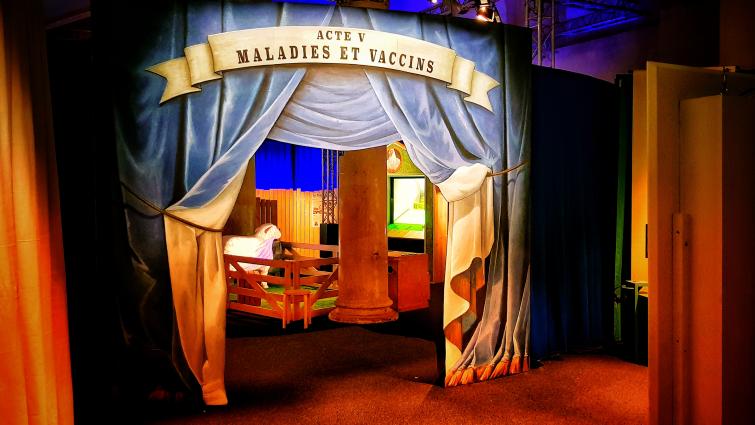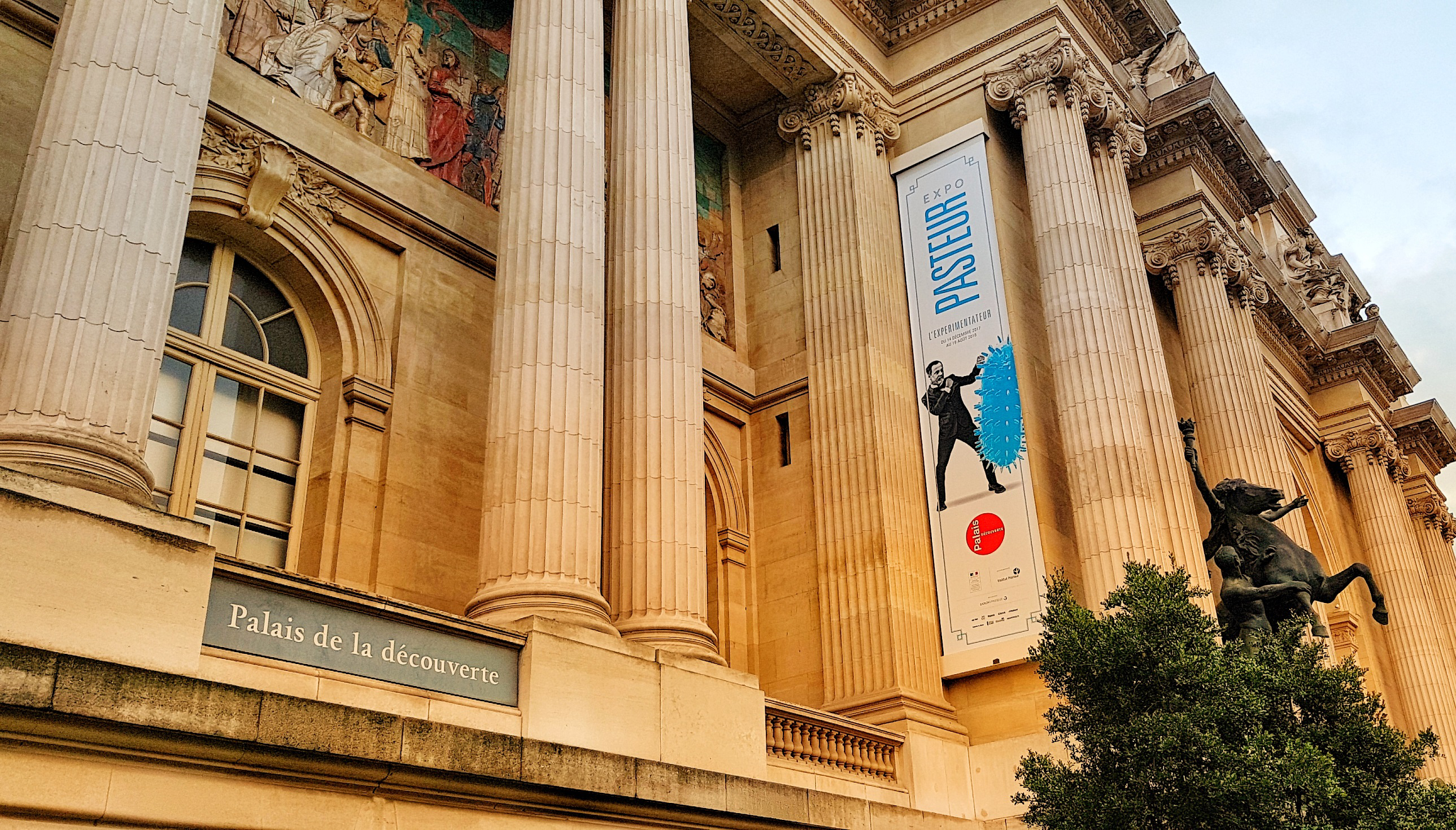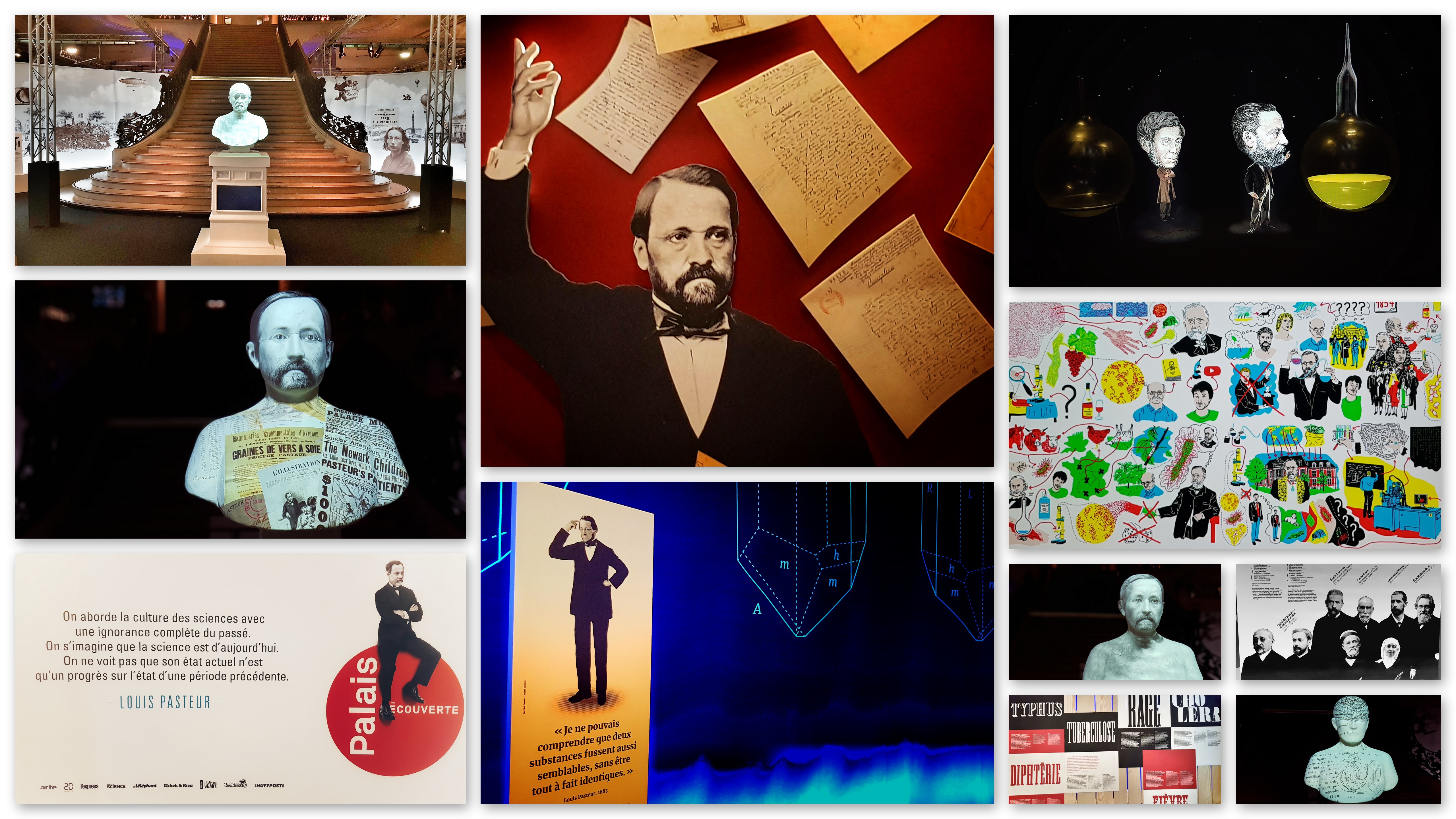
December 22, 2017
Bulletin interne de l'Institut Pasteur


"Pasteur, the experimenter" – the must-see exhibition!
On December 13, the day before it opened to the public, a host of eminent figures attended the inauguration ceremony for the "Pasteur, the experimenter" exhibition, developed by Universcience in collaboration with the Institut Pasteur: Emmanuel Macron, President of the French Republic, Agnès Buzyn, French Minister for Health, Françoise Nyssen, Minister for Culture, Bruno Maquart, President of Universcience (Cité des sciences et de l'industrie and Palais de la Découverte), and representatives from the Institut Pasteur, including new President Stewart Cole, Christian Vigouroux, Chairman of the Board of Directors, Maxime Schwartz, scientific curator of the exhibition, and Erik Orsenna, Ambassador for the Institut Pasteur.
© Ph. Levy
In their own words...
"This exhibition tells the story of one of France's major figures; it showcases a series of scientific revolutions, a moment in time. The "Pasteur, the experimenter" exhibition is a wonderful example of how we can make science accessible." Emmanuel Macron, President of the French RepublicSee the full video
"Several of the Institut Pasteur's scientists have contributed to this outstanding exhibition developed by Universcience. Everyone should come and see it!" Christian Vigouroux, Chairman of the Institut Pasteur Board of Directors
"Louis Pasteur was a man of many talents who was able to adapt his efforts to the most unlikely situations." Stewart Cole, President of the Institut Pasteur
"No, Pasteur was not just the inventor of the rabies vaccine! He was a chemist, he was interested in fermentation, in infectious diseases..." Maxime Schwartz, curator of the "Pasteur, the experimenter" exhibition
"This exhibition is a five-act play! It tells the story of Pasteur's battle to improve our understanding of the mechanisms of life." Erik Orsenna, Ambassador for the Institut Pasteur
"This is an exhibition that makes you want to learn more." Françoise Nyssen, French Minister for Culture
"[Louis Pasteur] adopted a scientific approach that had a real impact on people's lives." Agnès Buzyn, French Minister for Health
"The extraordinary thing about this exhibition is that with digital techniques we can recreate Pasteur's experiments ourselves!" Joël Derosnay, adviser to Bruno Maquart, President of Universcience
“We were given a huge amount of creative freedom for the exhibition films." Mathieu Lemarié, artist and director
See his full interview
"We made an animated film with wool projected onto a sheep sculpture." Pénélope de Bozzi, artist and director
No sooner had the exhibition opened than it was already creating a buzz, especially in the press. Some choice extracts:
"This exhibition sets out to reflect both the discoveries and the singular personality of the famous scientist." (Science et Avenir)
"A pioneer of vaccines and a scientific genius." (AFP)
"A great exhibition that appeals to the whole family!" (Onirik)
"An interactive, instructive exhibition (...) that gives pride of place to science." (Sortir à Paris)
"Crystals, microorganisms, infectious diseases, fermentation – the "Pasteur, the experimenter" exhibition explores a wide range of topics." (France Info)
"Exhibition at the Palais de la découverte: Louis Pasteur, a visionary scientist with a start-up spirit." (20 minutes)
"An exhibition that looks back at the remarkable career of a French scientist whose achievements should not be limited merely to the rabies vaccine." (Le Point)
"The exhibition is interactive (...) it allows visitors to recreate the achievements of Louis Pasteur." (Europe 1)
About the exhibition
From December 14, 2017 to August 19, 2018, the Palais de la découverte in Paris is hosting an exhibition entitled "Pasteur, the experimenter" ("Pasteur, l'expérimentateur"). The exhibition, curated by Universcience in collaboration with the Institut Pasteur, looks at Louis Pasteur's career – his many and varied research fields, his talent as an experimenter and also his links with art, technology and industry – and sheds light on events and figures that have long remained in the shadows.
Even during his lifetime, Louis Pasteur became a legend, especially (but not only) because he had managed to overcome that fatal and most spectacular of all diseases, rabies. Pasteur's achievements resulted in the process of pasteurization – which was named after him – as well as many significant advances in chemistry and microbiology. "Few eminent scholars had the scientific and social success that Pasteur did. Countless streets, schools and scientific institutions now bear his name, both in France and abroad," explains Bruno Maquart, President of Universcience, in the press release about the exhibition. "It's this great man that the Palais de la découverte is exploring here. By presenting the "Pasteur method", which characterizes the approach of today's great scientists, the exhibition "Pasteur, the experimenter" shows just how relevant and topical the achievements of this man – often regarded as the father of modern science – really are."
© Institut Pasteur
The exhibition draws on theatrical imagery – it is divided into several "acts", each illustrating one of Pasteur's main scientific periods. It uses films, interactive displays, reconstructions, animated models and "optical theaters" to tell Pasteur's story and showcase the achievements he made with his fellow scientists.
- Act 1: Crystals and dissymmetry (1847-1857)
In his research on paratartaric acid (a highly fundamental research topic, unlike his subsequent work), Louis Pasteur discovered virtually identical substances whose respective molecules are mirror images of each other, like the reflection of our hands held up to a mirror. He observed that this pattern is also at work in living organisms, concluding that this "dissymmetry" is a basic property of living systems. This fundamental aspect of modern biology brought him his first acclaim.
- Act 2: Fermentation (1857-1876)
It was the process of beet juice fermentation that confirmed the link between disease and microorganisms. When Pasteur began investigating the fermentation process with the aim of resolving the problems experienced at that time by alcohol manufacturers, he identified a link between germs and disease. He also discovered that the deterioration of organic products is caused by these microorganisms – hence the invention of pasteurization, a process designed to eliminate them. This gave rise to an unprecedented revolution in the food industry.
- Act 3: Spontaneous generation? (1859-1864)
According to the theory of spontaneous generation, organisms arise spontaneously in cultures and contaminate them. In 1865, this theory was disproved by Pasteur, whose discovery was corroborated by the French Academy of Sciences. Pasteur's work in this area had huge repercussions for food preservation, hygiene and our understanding of infectious diseases.
- Act 4: Silkworm diseases (1865-1869)
The first animal diseases investigated by Pasteur were two silkworm diseases, which were having a serious impact on French silk farming. He ultimately developed and promoted practical methods to maintain healthy silkworm farms.
- Act 5: Diseases and vaccines (1876-1895)
Louis Pasteur is particularly well known for his development of the vaccine for rabies, a spectacular and fatal disease. But the road to this discovery was a long one. This section, undoubtedly the most eagerly anticipated of the entire exhibition, looks at the scientific journey that led to one of the most significant discoveries of the late 19th century.
- Act 6: Pasteur's legacy (1885-1930)
A video montage looks at the major scientific advances that resulted from the work of Pasteur and his fellow scientists, in France and across the world. From the late 1880s, some Institut Pasteur scientists were sent on missions abroad. These missions led to the creation of "Pasteur" institutes in several countries around the world.
- Epilog: New perspectives on microorganisms
This epilog looks at the topic of vaccination and its basic principles, providing some current examples. A multimedia game and a film demonstrate the ingenious nature of today's scientific research and show how that same ingenious approach can be traced back through history.
Reminder :
To mark this event, the Palais de la Découverte is delighted to offer children under the age of 16 accompanied by Institut Pasteur staff the chance to visit the exhibition free of charge. The parent or guardian* simply needs to show his or her new Institut Pasteur badge** and the child will be admitted free of charge. This special offer is only available at the museum entrance desk for those visiting the exhibition between December 14 and 24, 2017.
As well as the badge, the museum staff may ask for proof of age for the child(ren) if they look older than 16. For an additional charge, visitors can also enjoy the other exhibitions and activities (including the planetarium, guided tours and workshops).
* children do not need to be related to the Institut Pasteur staff member. Only the Institut Pasteur badge and proof of age for older teenagers will be requested.
** we would ask you to take particular care when using your badge away from the Institut Pasteur campus.


